ANZINE : CAE 기술 매거진
이전 ANZINE Home Case Study
[Global] Dynamic CFD analysis of a vertical-axis washing machine with a hydraulic balancer
- Mario Cagliari, Alberto Del Rizzo
- SPM Engineering
- asartor@spmengineering.it
Dynamic CFD analysis of a vertical-axis washing machine with a hydraulic balancer
by Mario Cagliari, Alberto Del Rizzo | SPM Engineering / Published in Futurities Year 21 n°2 by EnginSoft
■ Abstract
이 기사는 동적 분석을 전문으로 하는 기업 SPM에서 수행한 수직축 세탁기의 유압 밸런서에 관한 연구를 다룹니다. 유압 밸런서는 세탁기의 탈수 단계에서 하중을 균형 있게 분배하는 중요한 부품으로, 세탁통과 함께 회전하면서 소금물이 채워진 플라스틱 링이 불균형이 발생한 쪽의 반대편으로 액체를 이동시켜 세탁기의 균형을 맞추는 역할을 합니다.
이번 연구는 세탁통의 불균형 원인이 유연성 때문이라는 가설을 검증하고, 이를 해결하기 위해 구조를 강화하는 방안을 모색하는 데 중점을 두었습니다. 이를 위해 입자 기반 CFD 방법론과 다물체 해석기를 사용해 유압 밸런서와 진동 그룹의 동작을 시뮬레이션한 결과, 물의 정상적인 변위로 불균형 질량의 약 50%를 개선하였으나 세탁통의 구조 자체는 추가적인 강화가 필요하다는 결론을 도출했습니다. 또한, 속도가 증가함에 따라 변위가 예상보다 크게 증가하는 현상이 나타났습니다.
기사에서 확인할 수 있듯, 본 연구는 유압 밸런서의 동작을 분석하는 데 성공적인 시뮬레이션을 거쳐 마무리되었으며, 복잡한 부품을 연구하는 데 적합한 접근 방식으로 평가되었습니다. 향후 관련 사례에서도 이 접근 방식이 유용할 것으로 기대되며, 연구 결과가 관련 기업에 도움이 되기를 바랍니다.
Introduction
A vertical-axis washing machine (Fig. 1) is a household appliance mainly used in the Asian and US markets. It consists of a plastic tub suspended by four spring-dampened rods containing a rotating basket which holds the laundry to be cleaned and that is completely immersed in water and detergent.
The washing process involving alternating relative movements between the tub/basket and an agitator mounted at its base is not the focus of this work, which instead concentrates on the final centrifugal phase of the work cycle where the dehydration of the placed laundry occurs.

Fig. 1. The components of a vertical-axis washing machine.
When spinning at high speed, the garments are pressed against the walls of the basket, expelling water through holes in the walls. This phase is critical because the load, which is randomly distributed around the basket, always presents a certain level of imbalance and, although there are systems that detect excessively unbalanced loads and prevent them from being spun, the forces and vibrations transmitted to the structure remain a concern for engineers.
A special device in this type of washing machine is the so-called hydraulic balancer: a component consisting of a hollow plastic ring fitted in the top of the tub and partially filled (about 50-60%) with salt water.
A series of blades distributed radially around the circumference of this ring (Fig. 2) force the water to follow the ring’s movement while channels allow the water to flow (Fig. 3).
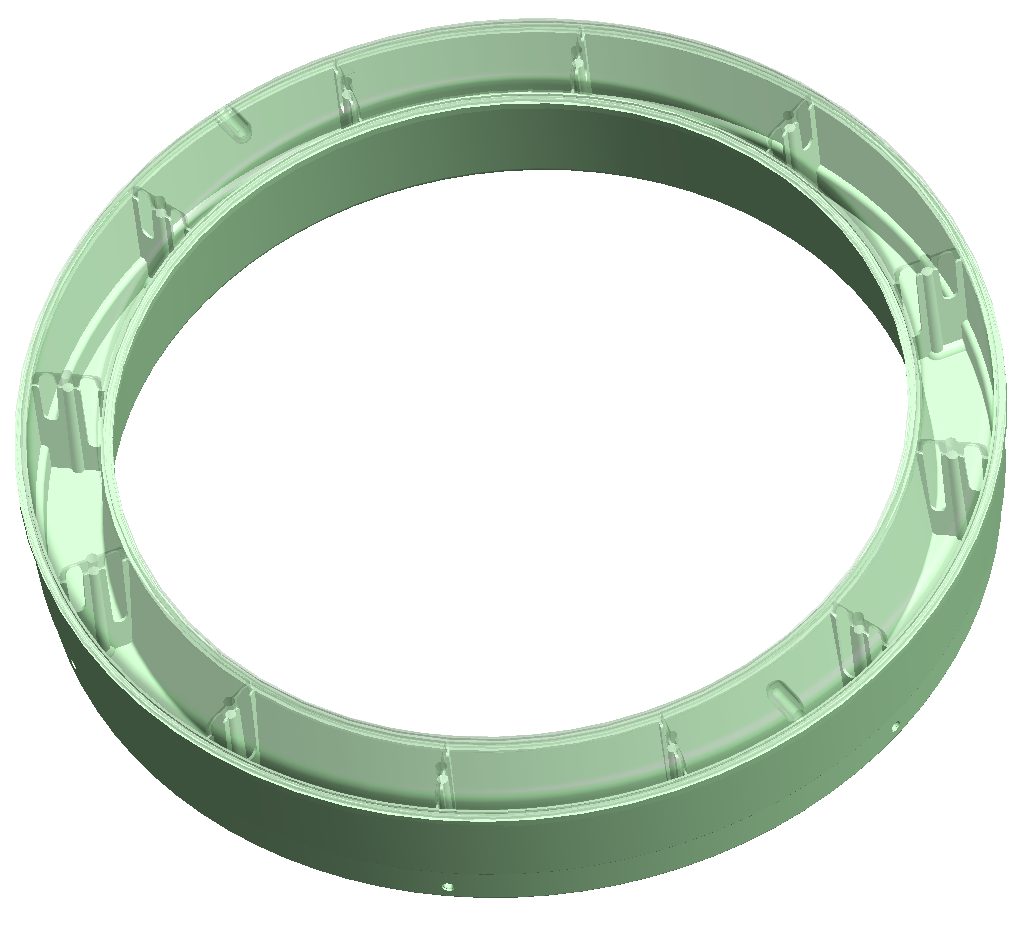
Fig. 2. Hydraulic balancing ring
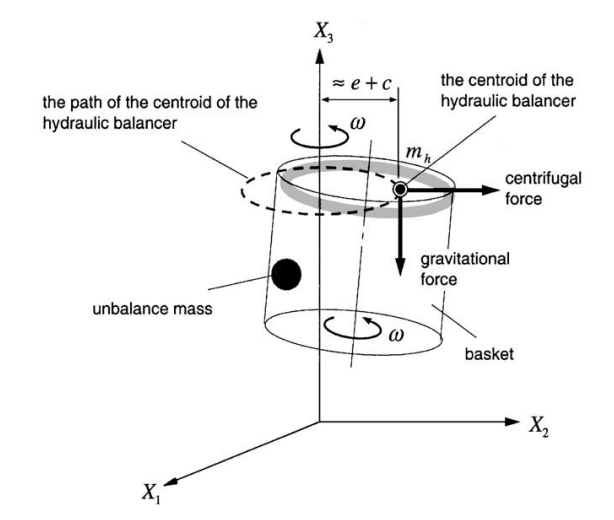
Fig. 3. Forces resulting from the hydraulic balancer [1].
In fact, the hydraulic balancer, rotating with the basket, acts as a counterbalance because it positions the fluid volume to the side opposite the imbalance [1].
This phenomenon is a common response of flexible rotors to unbalanced loads and occurs until the rotational speed reaches the natural frequency of the tub/drum’s flexible mode, the value of which must be maintained above the maximum operating speed with a safety margin.
The challenge
SPM received a prototype of a new machine from its customer that showed large displacements and sometimes even contact between basket and tub at a speed of 700rpm when a concentrated offset test
mass of 0.5kg was placed on the upper side of the basket, according to the customer’s internal procedures for product acceptance.
Typically, a concentrated offset test mass is used instead of laundry in laboratory tests to maintain repeatability and consistency with mathematical models because the behaviour of laundry is clearly difficult to simulate.
Since SPM’s customer had already identified a problem in the flexibility of the tub and proposed a modification to stiffen the SPM has already collaborated with EnginSoft in the past, and despite having other solutions for dynamic analysis in-house, the company decided to follow EnginSoft’s recommendation to combine FunctionBay/Recurdyn 2024 as a multibody solver for co-simulation with Particleworks due to proprietary connection interface between the two products.
The coupling of two pieces of software is mandatory in this particular case because the motion of the fluid affects the dynamics of the oscillating group and vice versa making it impossible to solve the two problems separately.
The oscillating group was modelled within Recurdyn 2024 (Fig. 4). The tub and basket were treated as rigid bodies with simplified geometries but accurate inertial properties obtained via CAD; the only component that required an actual shape was the ring, imported via Parasolid and included in the basket body.
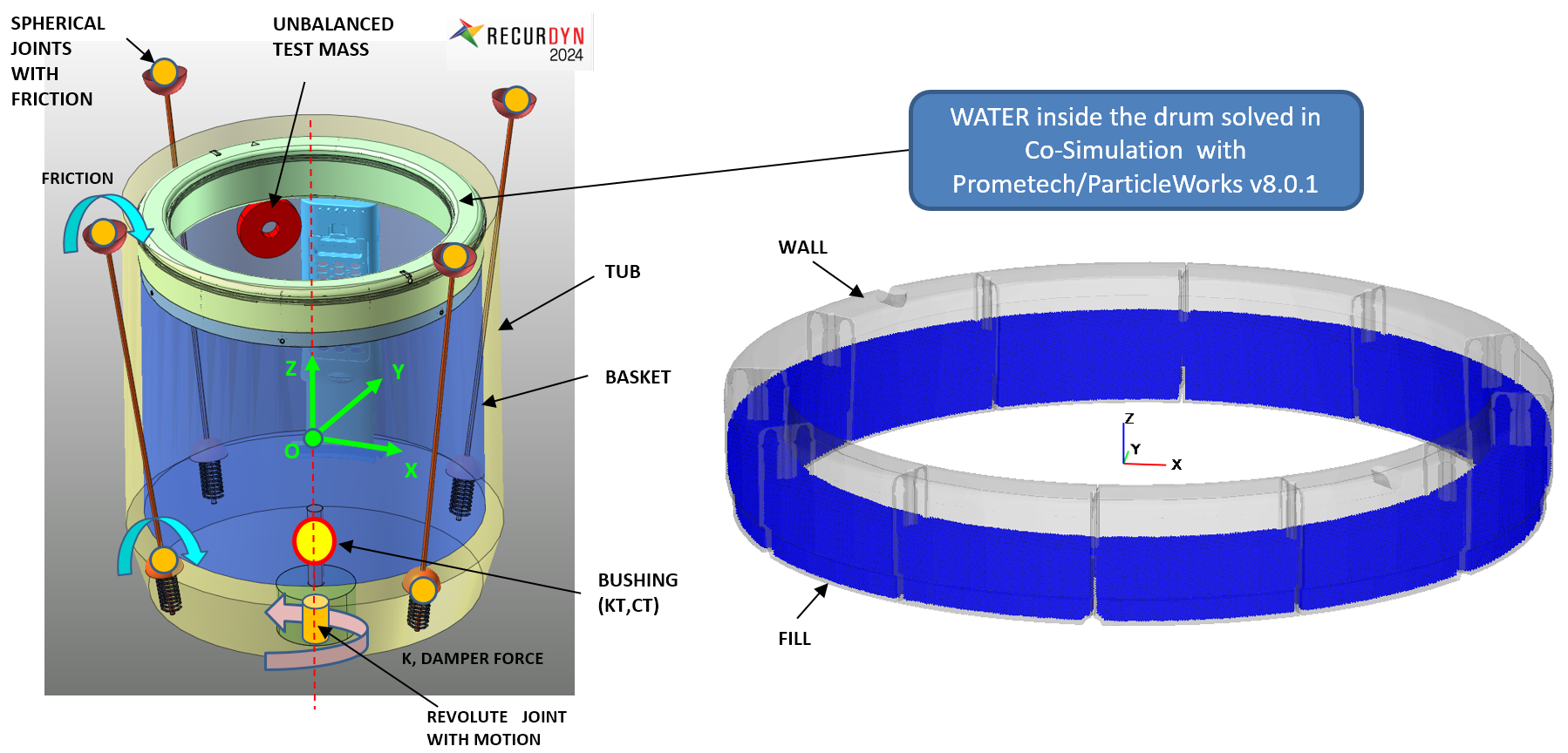
Fig. 4. Multibody model of the oscillating group.
SPM decided to avoid flexible bodies to reduce any additional computing effort compared to CFD, and flexibility was introduced into the system by means of a bushing element, whose elastic properties, together with the friction of the joint, were identified by means of laboratory tests.
Modelling the ring in Particleworks is very easy and straightforward: it only requires the definition of the wall, performed within Recurdyn, which is used as a boundary for the fluid; some water properties such as density and surface tension; and some simulation parameters such as Courant Factor, particle size, and time step. The most difficult part is to identify the particle size as a trade-off between realistic filling and calculation time. Using a ring with 1.5L of water and allowing at least five particles in a row to pass through the narrow channels on each blade resulted in a population of 768,000 particles with diameter of 1.25mm (Fig. 5) and a time step of 2.21 e-5s.
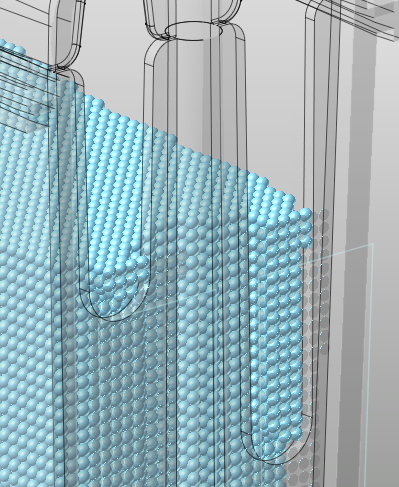
Fig. 5. Filling display in Recurdyn.
The maximum speed requirement of 700rpm was achieved with a 50-second linear acceleration based on the actual rotation ramp.
Laboratory tests
SPM supports simulation activities with laboratory tests whenever possible and, for washing machines, has developed a procedure to capture the three-dimensional movement of the oscillating group by means of six uniaxial accelerometers placed around the drum and thus obtain the X,Y,Z displacements and rotations at a central reference point (O) or any other position of interest.
The entire evolution of motion during machine acceleration to max spin speed using the unbalanced test mass was plotted in terms of amplitudes against the number of revolutions and this was used to validate the dynamic model with special attention to damping.
The bushing properties resembling flexibility were configured to obtain the equivalent basket deformation based on laser measurements taken during machine operation with no fluid inside the ring.
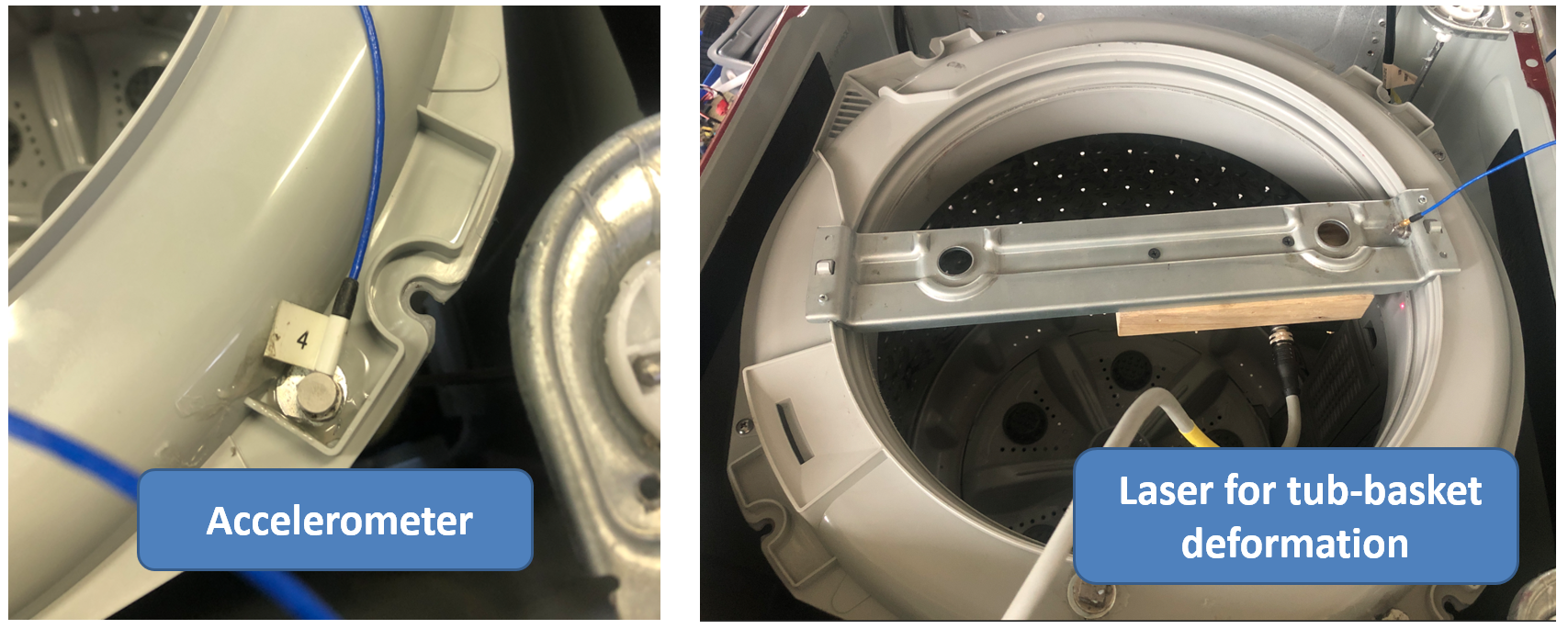
Fig. 6. Laboratory test configuration.
Results
The main output required from this simulation regarded the transfer of water within the ring, which was impossible to visualize in the actual machine, with the aim of investigating whether an instability occurring at high speed could be responsible for the large deflections and internal contacts.
The co-simulation determined that the water displaces correctly (Fig. 7), compensating for about half of the unbalanced mass required, but that the structure actually needs to be stiffened. In fact, both the simulation and laboratory test show increasing displacements with velocity instead of the constant trend that should appear after crossing the resonance of a low-speed rigid body spring-mass system (around 100rpm, see Fig. 8).

Fig. 7. Water displacement at 700rpm, opposite the imbalance.
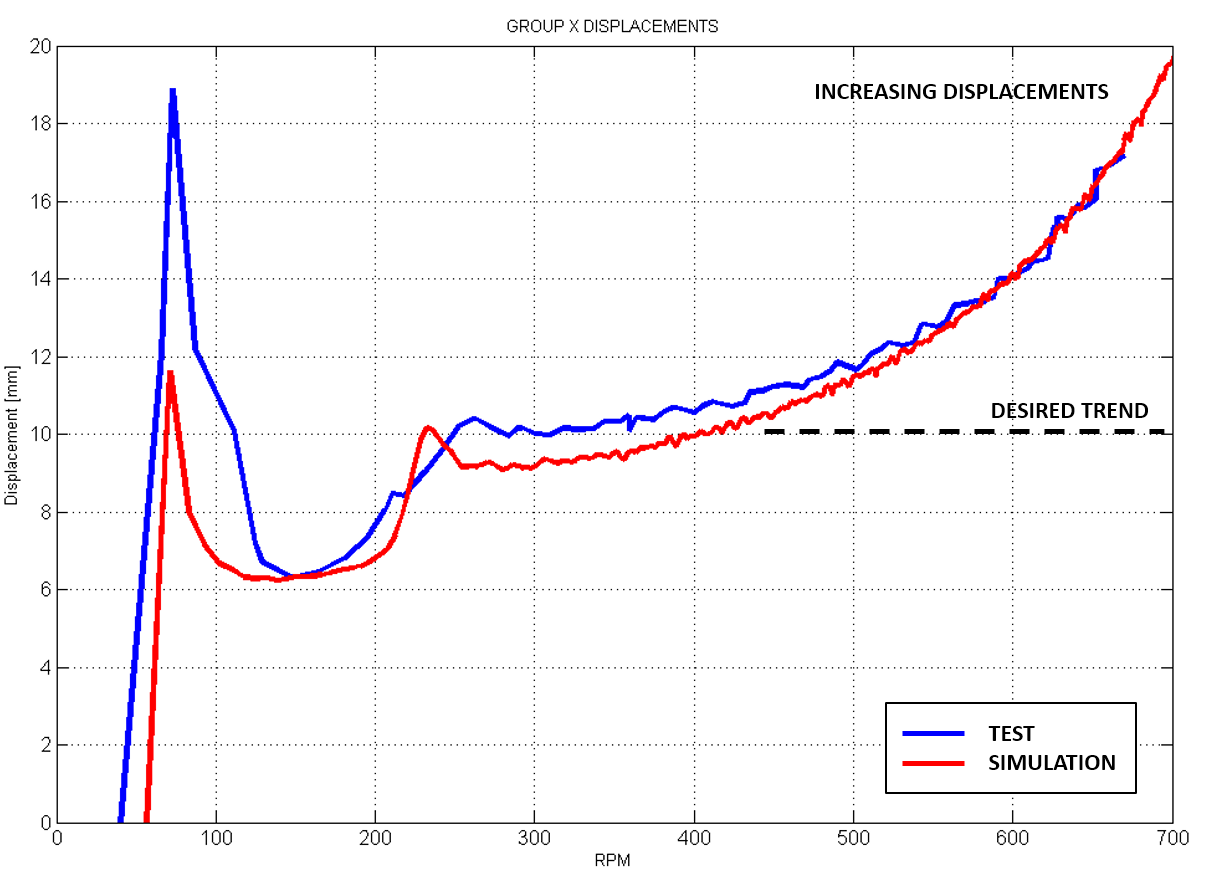
Fig. 8. Post-processing of time dependent results for amplitude v. RPM.
Conclusions
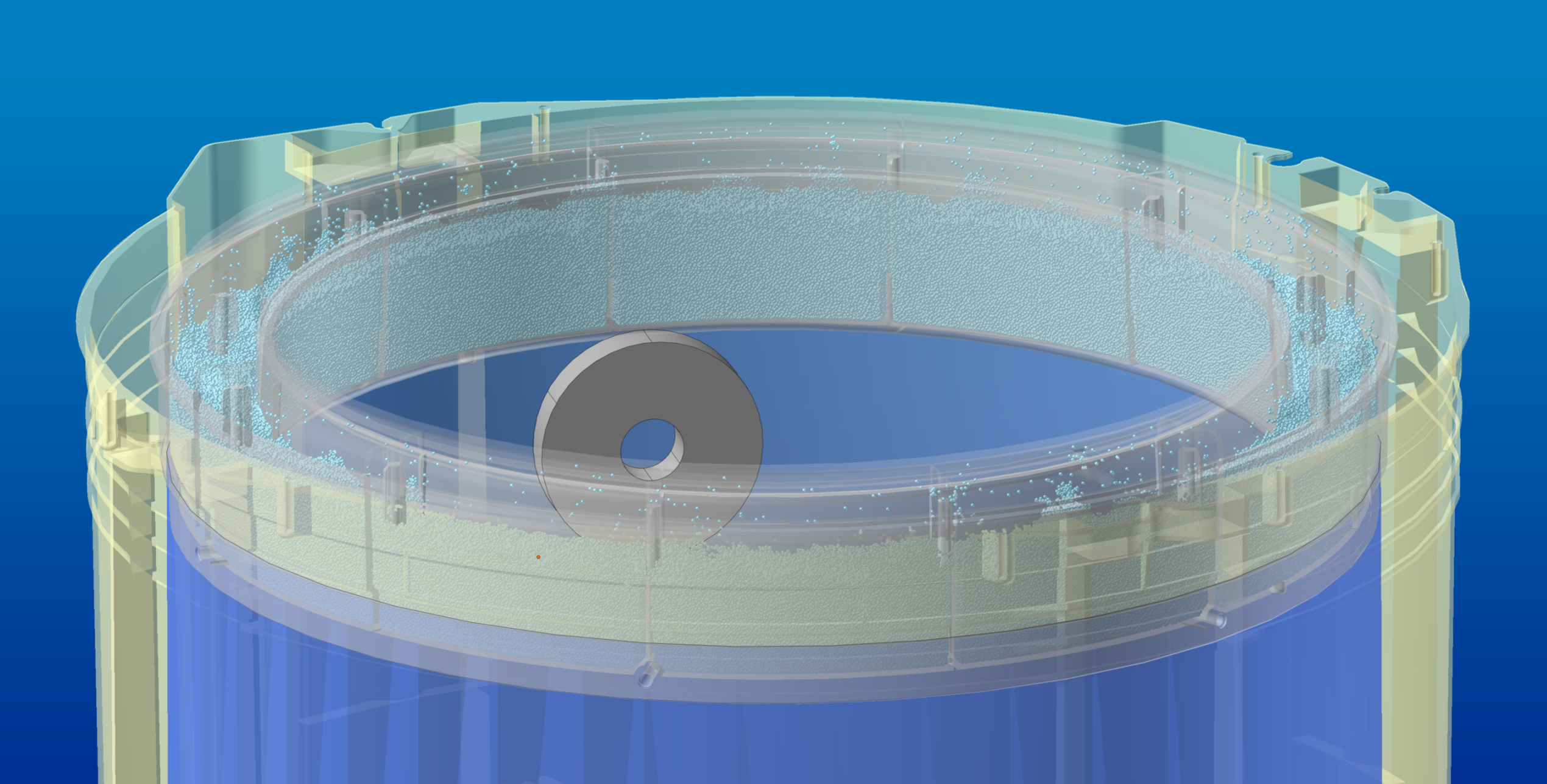
Although this type of dynamic CFD analysis is inherently difficult, all of EnginSoft’s assertions about the ease of use of the two solvers combined together in a simple and flawless process turned out to be correct. The help of their experts was obviously fundamental in configuring the simulation for the CFD part developed in Particleworks. For the multi-body side with Recurdyn, SPM proceeded according to its experience after some training on the new interface.
The company is satisfied with the results obtained so far and believe that this approach is perfect for studying a component such as the hydraulic balancing ring where an experimental approach would be more expensive and time consuming and would involve special prototypes with transparent materials and high-speed cameras.
At this stage, flexible bodies were not used, but will certainly be a future improvement.
As far as computing effort is concerned, the 50-second simulation with this small-time step was performed in about 15 hours using the GPU cores of an Nvidia RTX5090 graphics card which is the most critical hardware component, Particleworks being the most demanding task during frame calculation.
About SPM Engineering

SPM Engineering is a service company founded in 1975 and based in Fiume Veneto in the province of Pordenone in Italy. Its mission is to provide innovative design services for the development of new products for the mechanical, home appliance, motorcycle and scooter, and plastics industries.
The skill and expertise of its engineers, technicians and management team and the company’s capacity to use technologically advanced tools make SPM a unique and reliable company able to take Italian product engineering know-how all over the world. www.spmengineering.it
References
[1] S. Bae, J.M. Lee et al. “Dynamic analysis of an automatic washing machine
with a hydraulic balancer”, Journal of Sound and Vibration, Vol. 257/1 (2002):3–18.
For more information: Alberto Sartor – SPM Engineering | asartor@spmengineering.it








 ㈜태성에스엔이
㈜태성에스엔이


